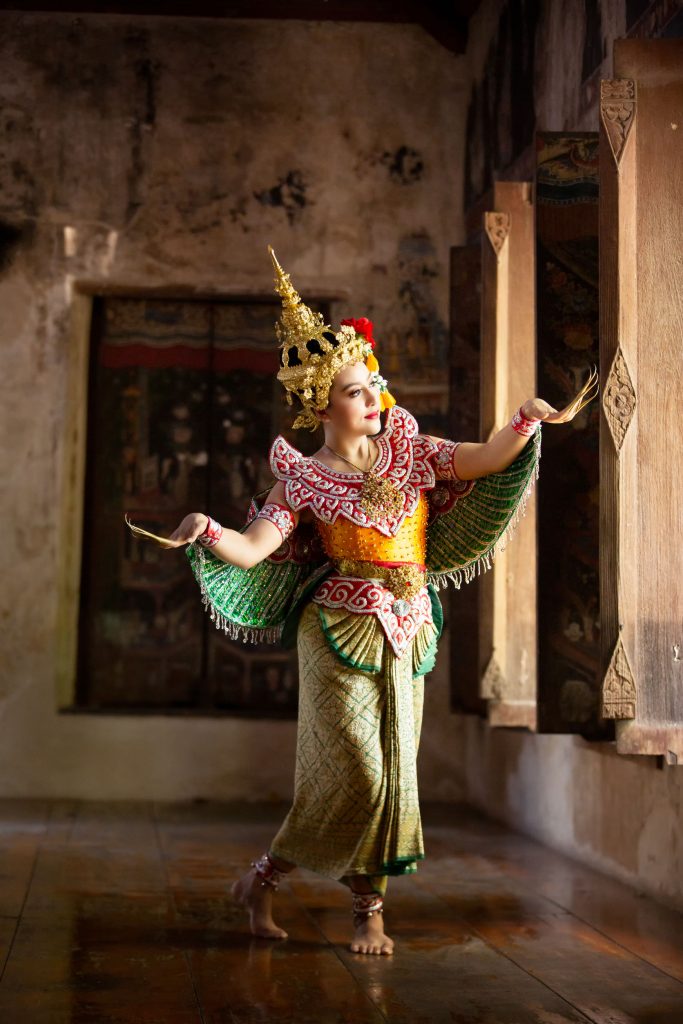Paññāsa Jātaka: The Allegorical Buddhist Tales of Thailand

Manorah Buchayant (Manorah’s Sacrifice) Dance depicting a scene from the Sudhana Jataka
The Paññāsa Jātaka is a renowned series of Buddhist allegorical tales, which are well-known in Thailand, Laos, Myanmar, and Cambodia. They were composed outside the central collection of scriptures in Theravada Buddhism, in which the Jātaka tales are known as those that form the Pali Canon. The Paññāsa Jātaka, which we talk about in this article, are tales that are derived from the original Jātaka and distinct from the latter. The term paññāsa means “fifty,” and alludes to the fact that were originally fifty tales in the Paññāsa Jātaka.
The Jātaka tales are believed to have been originally used by the Buddha himself to spread his didactic messages to an audience. Unlike what would be a more rigid and dry approach, narratives, lyrical verses, and a conscious elaboration of various concepts and terms, allowed the Buddha a captivating way to entertain and grow his audience, while also exemplifying the moral lessons of his stories through the trajectories of the characters’ lives.
In the Pali-Canon Jātaka, there are a total of 547 stories of the Buddha’s former life while he was a bodhisattva (although a common misconception is that there are 550 stories), a being attempting to achieve Enlightenment by cultivating ten essential virtues, or pāramī. In each tale, the protagonist bodhisattva represents an incarnation of the being that would ultimately become the Buddha. In a typical Jātaka tale, the bodhisattva protagonist would be situated in a scene of the story’s present, while recalling details from his past lives. By connecting the two time frames, the Buddha unveiled patterns about the world and human behavior, as well as showed how villains and heroes evolved in their reincarnations.
However, in the Paññāsa Jātaka, the cultivation of pāramī is not necessarily the focus. One may say that the focus in the case of the Paññāsa Jātaka can be less on morals, and more on entertainment and plot.
For instance, in the way Samutthakhot, one of the earliest Paññāsa Jātaka tales, is told, the focus seems to be less on moral lessons, and more on adventure. The story begins with Samutthakhot, a prince, hearing rumors about the beauty of a woman, Vintumadee. He travels to the city where she lives and displays his musical skills on a harp to impress her father and seek his approval. Successful, Samutthakhot is offered Vintumadee as his wife. As the couple make merit together after their wedding, they encounter Vidyadhara, a supernatural being with magical powers, who is also badly injured. Samutthakhot aids Vidyadhara, who thanks him with a magical flying sword. Samutthakhot flies with Vintumadee through the legendary forest of Himavanta (or the Himalayas) before the magical sword is stolen. The pair struggle to navigate out of the forest, but they ultimately reach a boat. While sailing, the boat breaks down due to rough weather. The two lovers are separated in the process. The ruler of the heavens, Sakka (or Sakra), orders the goddess Manimekhala, Guardian of the Seas, to rescue the lovers, who are, in the end, reunited. (In another life, Samutthakhot would be reborn as the Buddha, while Vintumadee would be reborn as Princess Yasodhara, who was the wife of the Buddha when he was still Prince Siddhartha.)
Origins and Influences of Paññāsa Jātaka Tales in Thailand

Mural depicting a scene from Samuttakhot (cr. reurnthai )
Prince Damrong Rajanubhab, the half-brother of King Chulalongkorn (Rama V, who reigned from 1851 to 1868) had hypothesized that the Paññāsa Jātaka was composed by monks of Chiang Mai between the years 1457 and 1657; however, this is unlikely to be correct. As some scholars have pointed out, the Paññāsa Jātaka tales were already well-known by the Sukhothai Era (1238-1438). The monks of Chiang Mai, they elaborate, were unlikely to have been responsible for the tales, as the founding of Chiang Mai was not until 1296.
In today’s collection of Paññāsa Jātaka, there are 61 tales – a total which does not conform to the name Paññāsa Jātaka, in which “paññāsa” means fifty. It is likely that the “extra eleven” were made and added after a first set of fifty had been concluded. Unfortunately, because the tales were originally and for a long time transferred only orally, it is difficult to trace a precise evolution.
The Paññāsa Jātaka has been translated into Pali to bridge its link to the Pali Canon. However, constantly viewed as derivations, secondary, it has never been upheld through the same, elevated status as the original Jātaka Tales. The Paññāsa Jātaka nevertheless remains widely popular in Thailand, where it has also affected literature, the visual arts, and even television series.
Verses of the Paññāsa Jātaka are often compiled in Thailand’s renowned Roi Krong poetry collection. Scenes from the tales also feature regularly on temple wall paintings and carvings. On television, a genre known as “jakrawong” – fictionalized stories about royalty, often involving flashy, magical powers – remains popular despite decades of existence. Echoes of the Paññāsa Jātaka storyline abound in the jakrawong: a male protagonist, often a prince who is forced to leave home, encounters obstacles and ultimately his bride (or brides). And yet, unlike in the Paññāsa Jātaka, characters such as righteousness and morality are replaced with weapons and brute force. There is also typically more drama in the jakrawong, to always heighten suspense, as television shows often aim to do.

Jakrawong drama (cr. daradaily)
The modernization of the Paññāsa Jātaka has helped maintain its popularity until this day, despite it being, sometimes, a long departure from the Pali Canon’s Jātaka. Originating in Thailand and given a distinct flavor in modern culture, it wouldn’t be an exaggeration to consider the Paññāsa Jātaka one of Thailand’s intangible cultural heritage or one of its national treasures. Below is a list of tales of the sixty-one Paññāsa Jātaka:
1) Samutthakhot Jātaka, 2) Sunton Jātaka, 3) Suntanu Jātaka, 4) Rattanapachot Jātaka, 5) Sirivibunkiti Jātaka, 6) Vibhunracha Jātaka, 7) Sirijutarnid Jātaka, 8) Chantarat Jātaka, 9) Supamatit Jātaka, 10) Siritorn Jātaka, 11) Tulokbanti Jātaka, 12) Atit Jātaka, 13) Tukammanik Jātaka, 14) Mahasurasen Jātaka, 15) Suwankuman Jātaka, 16) Kanokwan Jātaka, 17) Viriyabunti Jātaka, 18) Dharmasontok Jātaka, 19) Suntasana Jātaka, 20) Wattangkuleeracha Jātaka, 21) Borangabin Jātaka, 22) Dharmikabuntiracha Jātaka, 23) Jarktarn Jātaka, 24) Dharmaracha Jātaka, 25) Norache Jātaka, 26) Suroop Jātaka, 27) Mahapatum Jātaka, 28) Pantakarn Jatarka, 29) Pahakawee Jātaka, 30) Setthabuntid Jātaka, 31) Bhuppa Jātaka, 32) Parasiracha Jātaka, 33) Phramahakhosaracha Jātaka, 34) Taewarukum Jātaka, 35) Solapacha Jātaka, 36) Sitisarn Jātaka, 37) Noracheekathin Jātaka, 38) Atitaewaracha Jātaka, 39) Pajittikuman Jātaka, 40) Sapasinti Jātaka, 41) Sangkapatti Jātaka, 42) Chantasen Jātaka, 43) Suwankachap Jātaka, 44) Siriso Jātaka, 45) Vorasacha Jātaka, 46) Arintha Jātaka, 47) Rotasen Jātaka, 48) Suvarnasirisa Jātaka, 49) Wanawa Jātaka, 50) Pakul Jātaka, 51) Sonanta Jātaka, 52) Seenaart Jātaka, 53) Suvarnasung Jātaka, 54) Surapa Jātaka, 55) Suvarnakachapacha Jātaka, 56) Taewanta Jātaka, 57) Subin Jātaka, 58) Suvarnawong Jātaka, 59) Voranutd Jātaka, 60) Sirisa Jātaka, 61) Chantakart Jātaka.
Reference
Lausunthorn, PhD., (Royal Scholar), Niyada, Prof., “Paññāsa Jātaka [ปัญญาสชาดก].” Watthanatham Journal: Department of Cultural Promotion, yr. 54, no. 1, January – March. 2015, pp. 34 – 41. Retrieved April 1, 2021. Link: http://magazine.culture.go.th/2015/1/mobile/index.html#p=37


